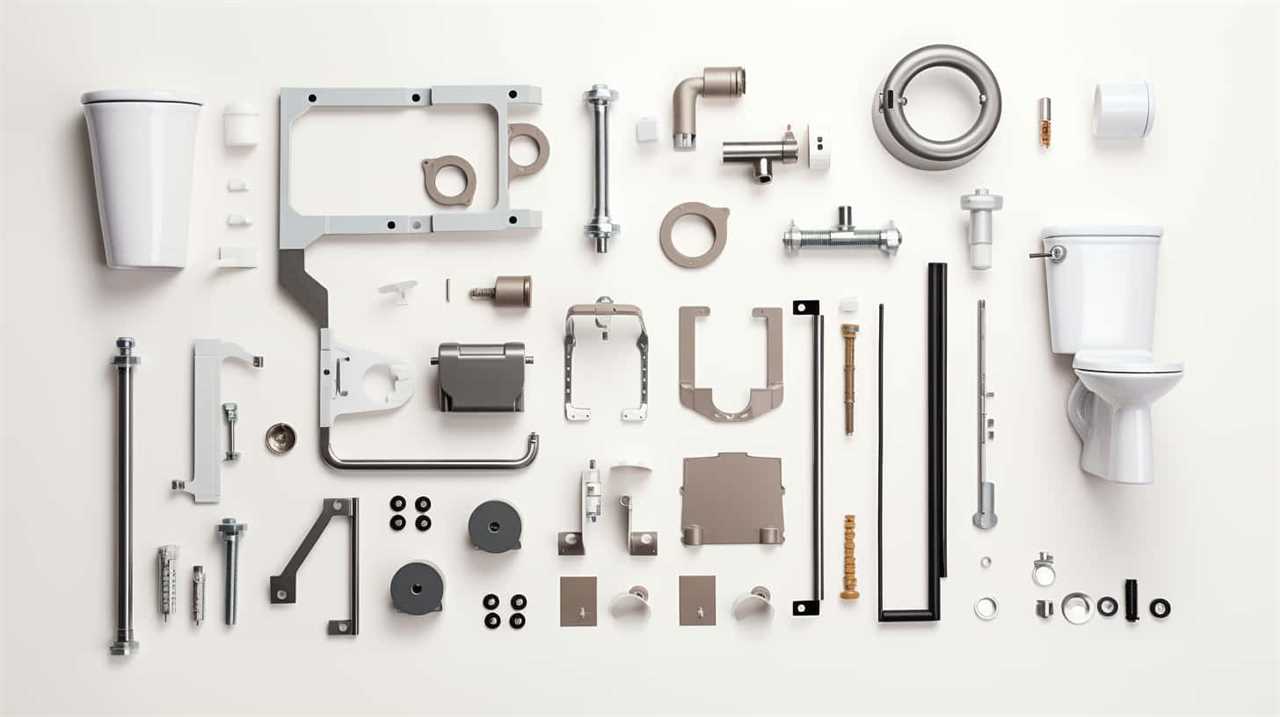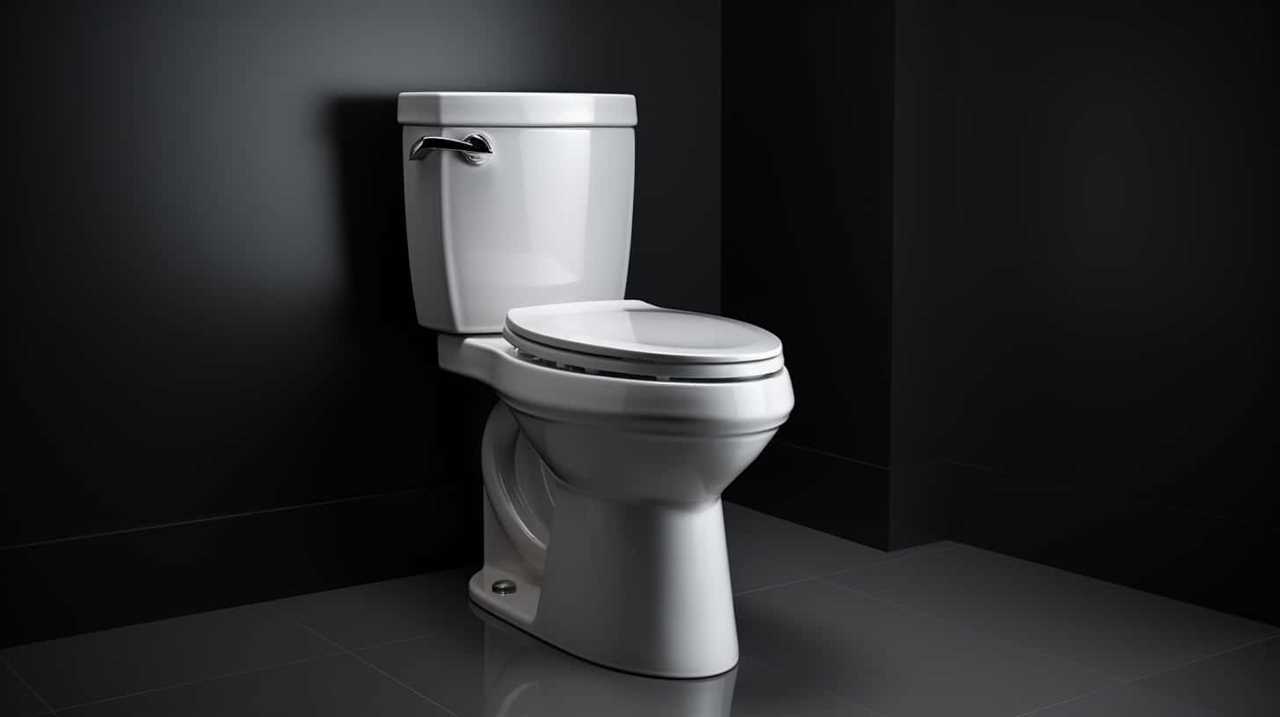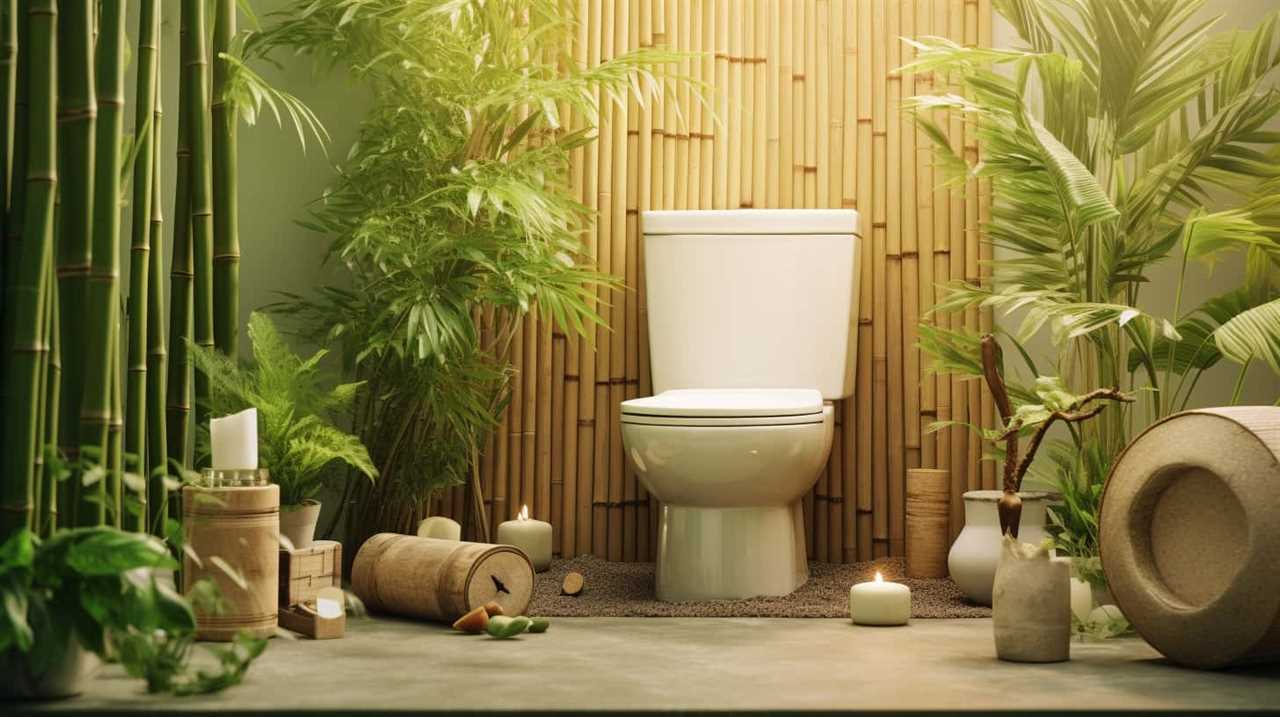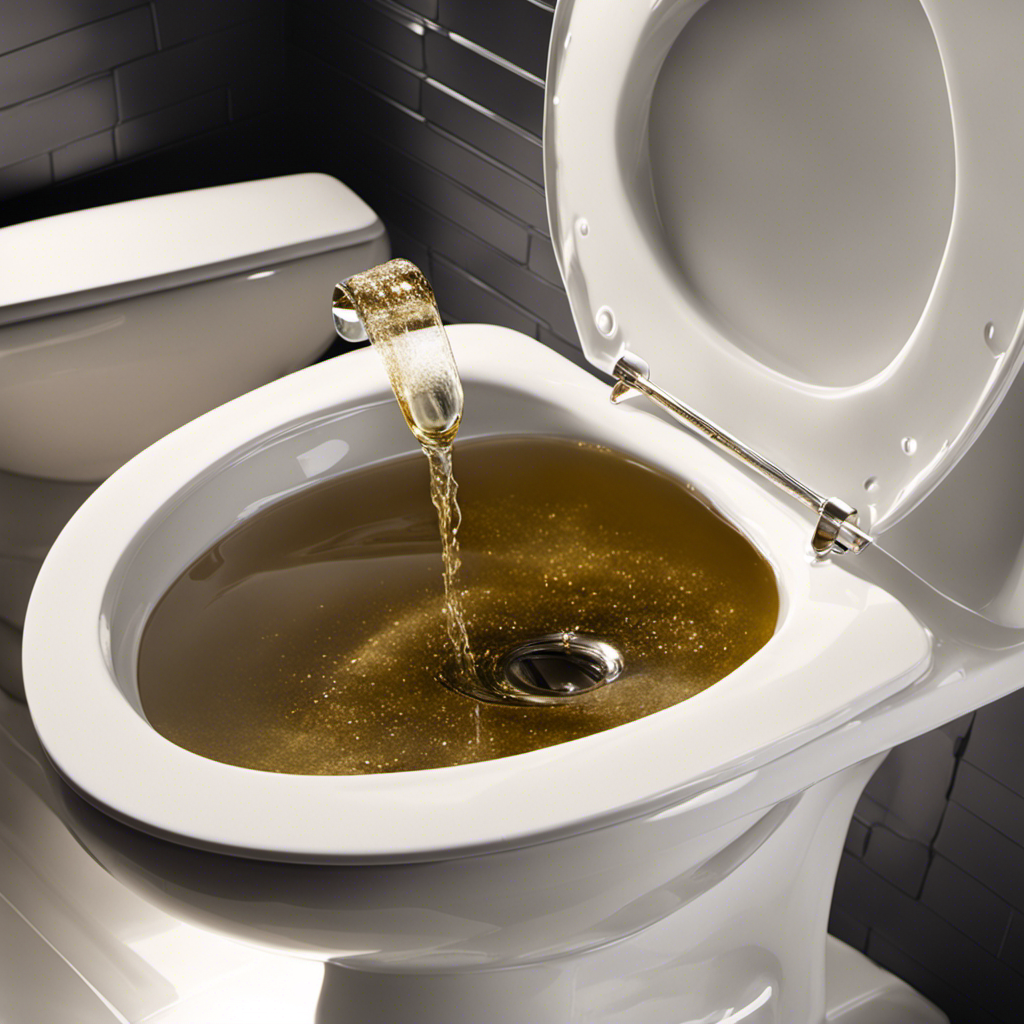Ever puzzled over why your toilet won’t flush while it’s still running? Worry not, because we’re here to illuminate this baffling problem for you.
In this article, we will delve into the various reasons behind this frustrating phenomenon. From a faulty flapper valve to a malfunctioning fill valve, we will explore the technical intricacies that can hinder the flushing process.
So, fasten your seatbelts, fellow toilet troubleshooters, and let’s embark on a journey to toilet mastery!
Key Takeaways
- Water supply issues, such as a clogged or blocked water supply line, malfunctioning fill valve, or faulty float valve or float arm, can prevent a toilet from flushing properly.
- Regular cleaning and avoiding flushing non-flushable items can help prevent a clogged toilet bowl.
- A faulty flapper valve, with issues such as wear and tear, a loose or tangled chain, or misalignment, can also cause a toilet to not flush when it’s running.
- A malfunctioning fill valve can lead to problems with water filling the tank or overfilling it, affecting the flushing process.
Water Supply Issue
Sometimes, we may experience a toilet not flushing when it’s running due to a problem with the water supply. This is a common issue that can be caused by various factors.

The first possible cause could be a clogged or blocked water supply line. Sediment or debris can accumulate over time, restricting the flow of water into the toilet tank.
Another common cause is a malfunctioning fill valve. If the fill valve isn’t working properly, it may not allow enough water to enter the tank, resulting in a weak or incomplete flush.
Additionally, a faulty float valve or float arm can also lead to a toilet not flushing properly. Troubleshooting tips for these issues include checking the water supply line for any blockages, adjusting or replacing the fill valve, and ensuring that the float valve and arm are functioning correctly.
Clogged Toilet Bowl
Occasionally, we encounter a clogged toilet bowl that prevents proper flushing. When faced with this issue, it’s important to address it promptly to avoid further complications.

Proper toilet bowl maintenance is key to preventing clogs. Regular cleaning and avoiding the flushing of non-flushable items can help maintain a clear pathway for waste removal.
However, if you find yourself dealing with a clogged toilet bowl, there are troubleshooting tips you can try. Using a plunger, applying gentle pressure and creating a tight seal around the drain, can often dislodge the clog. If that doesn’t work, a toilet auger can be used to break up the blockage. It’s important to exercise caution and follow proper safety procedures when attempting these methods.
Now, let’s move on to the next section where we’ll discuss the possible culprit of a faulty flapper valve.
Faulty Flapper Valve
When the toilet is running, it may be due to a faulty flapper valve. The flapper valve is responsible for sealing the toilet tank and allowing water to flow into the bowl during a flush. If the flapper valve isn’t functioning properly, it can result in a continuous flow of water into the bowl, causing the toilet to run.

Here are three common issues with a faulty flapper valve:
- The flapper valve may be worn out or damaged, preventing it from creating a proper seal.
- The chain connecting the flapper valve to the flush handle may be too loose or tangled, causing the flapper valve to remain open.
- The flapper valve may be misaligned or improperly installed, leading to water leakage.
To resolve these issues, flapper valve troubleshooting is necessary. In some cases, a simple adjustment or cleaning of the flapper valve may solve the problem. However, if the flapper valve is severely damaged, toilet flapper replacement may be required to ensure proper functioning of the toilet.
Malfunctioning Fill Valve
As we continue our discussion from the previous subtopic, let’s explore another potential cause for a toilet not flushing when it’s running: a malfunctioning fill valve.
The fill valve is responsible for regulating the water level in the toilet tank. When it malfunctions, it can either prevent water from filling the tank or cause the tank to overfill, resulting in a weak or non-existent flush.

Troubleshooting a malfunctioning fill valve requires some basic knowledge of its components and operation. In some cases, a simple adjustment to the float or the water level may solve the issue. However, if the fill valve is damaged or worn out, it may require repair or replacement.
It’s important to consult a professional or follow manufacturer guidelines for proper fill valve repair.
Problem With the Flush Handle
One common reason why toilets may not flush when they’re running is due to a problem with the flush handle. The flush handle is the mechanism that activates the flushing process. If the handle becomes loose or detached, it may not properly engage with the flushing mechanism, resulting in a failed flush.
Additionally, a broken chain can also prevent the toilet from flushing. The chain connects the flush handle to the flapper, which controls the flow of water from the tank to the bowl. If the chain is broken or too loose, it can prevent the flapper from opening fully, thus obstructing the flushing process.

To fix these issues, the flush handle should be tightened or replaced, and the chain should be adjusted or replaced if necessary.
Frequently Asked Questions
Can a Toilet Still Run if There Is a Problem With the Water Supply?
Yes, a toilet can still run even if there is a problem with the water supply. Troubleshooting toilet running without water involves checking for a clogged fill valve, malfunctioning flapper, or a faulty water supply line.
How Can I Determine if My Toilet Bowl Is Clogged?
To determine if your toilet bowl is clogged, check if water rises to the rim when you flush. If it does, you likely have a clog. Common causes include excessive toilet paper or foreign objects.
What Are the Signs of a Faulty Flapper Valve?
Signs of flapper valve issues include a continuously running toilet, water trickling into the bowl, and weak flushes. To fix a faulty flapper valve, turn off the water supply, remove the old flapper, and install a new one.

How Do I Identify if My Fill Valve Is Malfunctioning?
To troubleshoot a malfunctioning toilet fill valve, we need to identify signs such as water continuously running, low water pressure, or no water filling the tank. Proper toilet fill valve replacement can solve these issues.
Is It Possible for a Problem With the Flush Handle to Prevent the Toilet From Flushing?
Yes, a problem with the flush handle can prevent the toilet from flushing. It may be due to a broken handle or a disconnected chain. Troubleshooting running toilets often involves checking and fixing the flush handle issue.
Conclusion
In conclusion, if your toilet won’t flush while it’s running, it could be due to a water supply issue, a clogged toilet bowl, a faulty flapper valve, a malfunctioning fill valve, or a problem with the flush handle.
One interesting statistic to consider is that a leaky flapper valve can waste up to 200 gallons of water per day, which is equivalent to flushing your toilet over 30 times unnecessarily.











